Phytopathogenic bacteria utilize host glucose as a signal to stimulate virulence through LuxR homologues
- PMID: 36762904
- PMCID: PMC10013830
- DOI: 10.1111/mpp.13302
Phytopathogenic bacteria utilize host glucose as a signal to stimulate virulence through LuxR homologues
Abstract
Chemical signal-mediated biological communication is common within bacteria and between bacteria and their hosts. Many plant-associated bacteria respond to unknown plant compounds to regulate bacterial gene expression. However, the nature of the plant compounds that mediate such interkingdom communication and the underlying mechanisms remain poorly characterized. Xanthomonas campestris pv. campestris (Xcc) causes black rot disease on brassica vegetables. Xcc contains an orphan LuxR regulator (XccR) which senses a plant signal that was validated to be glucose by HPLC-MS. The glucose concentration increases in apoplast fluid after Xcc infection, which is caused by the enhanced activity of plant sugar transporters translocating sugar and cell-wall invertases releasing glucose from sucrose. XccR recruits glucose, but not fructose, sucrose, glucose 6-phosphate, and UDP-glucose, to activate pip expression. Deletion of the bacterial glucose transporter gene sglT impaired pathogen virulence and pip expression. Structural prediction showed that the N-terminal domain of XccR forms an alternative pocket neighbouring the AHL-binding pocket for glucose docking. Substitution of three residues affecting structural stability abolished the ability of XccR to bind to the luxXc box in the pip promoter. Several other XccR homologues from plant-associated bacteria can also form stable complexes with glucose, indicating that glucose may function as a common signal molecule for pathogen-plant interactions. The conservation of a glucose/XccR/pip-like system in plant-associated bacteria suggests that some phytopathogens have evolved the ability to utilize host compounds as virulence signals, indicating that LuxRs mediate an interkingdom signalling circuit.
Keywords: LuxR ligand; glucose; interkingdom signalling; quorum sensing.
© 2023 The Authors. Molecular Plant Pathology published by British Society for Plant Pathology and John Wiley & Sons Ltd.
Figures
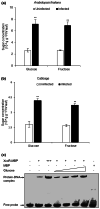
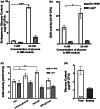
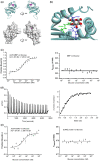
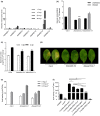
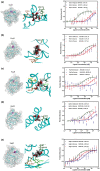

References
-
- Ahmer, B.M. (2004) Cell‐to‐cell signalling in Escherichia coli and Salmonella enterica . Molecular Microbiology, 52, 933–945. - PubMed
-
- Berger, S. , Sinha, A.K. & Roitsch, T. (2007) Plant physiology meets phytopathology: plant primary metabolism and plant–pathogen interactions. Journal of Experimental Botany, 58, 4019–4026. - PubMed
-
- Bonfig, K.B. , Gabler, A. , Simon, U.K. , Luschin‐Ebengreuth, N. , Hatz, M. , Berger, S. et al. (2010) Post‐translational derepression of invertase activity in source leaves via down‐regulation of invertase inhibitor expression is part of the plant defense response. Molecular Plant, 3, 1037–1048. - PubMed
-
- Bottomley, M.J. , Muraglia, E. , Bazzo, R. & Carfi, A. (2007) Molecular insights into quorum sensing in the human pathogen Pseudomonas aeruginosa from the structure of the virulence regulator LasR bound to its autoinducer. Journal of Biological Chemistry, 282, 13592–13600. - PubMed
Publication types
MeSH terms
Substances
LinkOut - more resources
Full Text Sources

